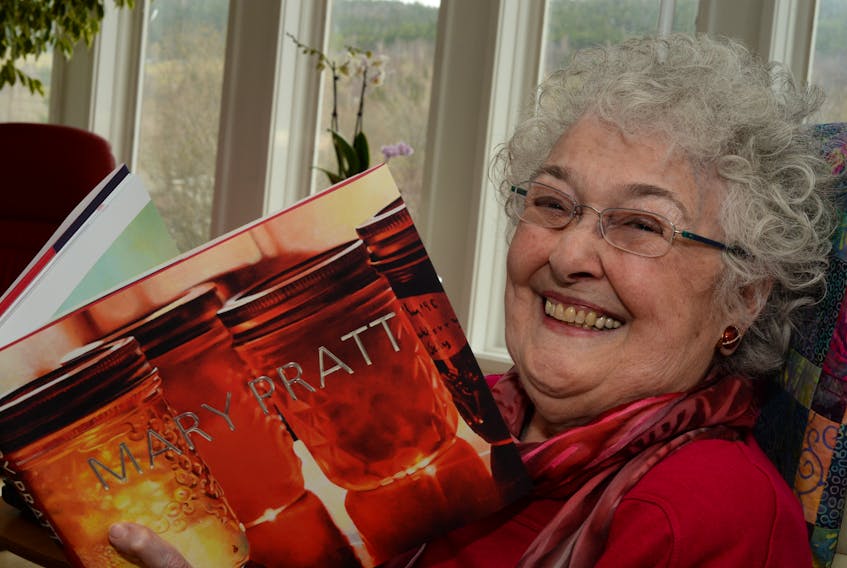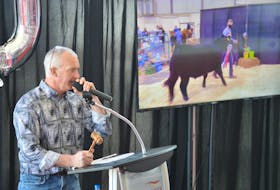For many years, Mary Pratt was my mother-in-law. Not for years now, but for many.
Because of that, I’ve had a unique window on a great Canadian artist, from the books she liked to read to the order she wanted her garden to hold, right down to knowing which smiles were true and which ones were delivered because they were required.
But more than a superb and unique painter, Mary Pratt was also a skilled tactician, an exceptionally smart woman who worked within the strictures and conventions of a different age.
I will tell you this: she was a force that you underestimated at your peril — and many people did. I think that was, in part, because she wanted it that way.
She was certainly not unappreciated as a painter; her skills there are well known.
After her death, the Internet lit up with people posting images of their favourite works, and every one, even if I knew it well, struck me again as if it were brand new.
But more than a superb and unique painter, Mary Pratt was also a skilled tactician, an exceptionally smart woman who worked within the strictures and conventions of a different age.
She worked very well as her own kind of secret agent of change — kind and careful and generous to a fault, to be sure, but always listening, always aware, always balancing cause and effect. She knew where all the levers fit, knew exactly where the fulcrum had to sit for maximum effect, knew how much gentle force to apply. If she decided that the province needed a new, formal art gallery properly designed to store and display art — rather than a leftover corner of the St. John’s Arts and Culture Centre carpeted with a horrendous orange carpet that, if the stories are true, was purchased second-hand by Premier Joey Smallwood from a closed pavilion at Expo 67 — she would work relentlessly, both publicly and socially, until it happened. And it did.
All within a divine exterior; if she had to move you forward with a pointed barb, she cloaked it afterwards with a smile and a laugh, so that you could be chastised and charmed all at the same time, not even sure anymore if the sharp end was deliberate.
Plenty has been said already about her ability to find both great beauty and great harshness in the play of light and colour in the everyday. I think it’s fair to say that she also sent an uncrushable message that, even while living up to the expected conventions of household life and motherhood, there are ways to successfully rebel.
It was a slow, understated revolution, step by hidden step, but a revolution nonetheless.
This was a woman, raised in Fredericton, with all the expected skills of the role she was expected to fill. She could make the right kind of conversation, take the temperature of a room and put anyone at ease: she could cook a meal for five or a dozen, and know what sort of formality was required — a master, from centrepieces to silverware. Her turkeys were always on time and never dry, the stuffing unique. The flowers were cut the right height for the vase, always. On that front, she could be unflappable, everything seemingly effortless.
She was trained for that: she left the formality of the very best street in Fredericton to come here, to raise a family in a house in an outport world that, to a large degree, no longer exists. She tamed that world the same way she tamed everything else; the irresistible force meeting the immovable mountain, and just plain grinding the mountain down.
In her own way, she delivered a clear message that great light cannot be kept hidden under any basket, however much the society of the day might have already decided where everything fit, and what role everyone was suited by sex and social convention to fit.
She made things possible for the next generation of artists, opened a door both for women and for non-traditional examples of where and what beauty is.
I may be wrong about all of this. But more than anything else, I want you to know that I think her painting, as spectacular as it was, was not her only memorable skill.
I was always a little scared and yet in awe. A velvet force that was careful to hide being a hammer, except when necessary.
Great ability will out.
And in many ways, the kindest revolution anyone could ever experience.
We’re a poorer place now.
Russell Wangersky’s column appears in 39 SaltWire newspapers and websites in Atlantic Canada. He can be reached at [email protected] — Twitter: @wangersky.









